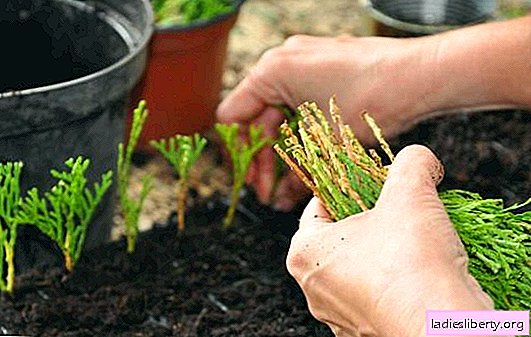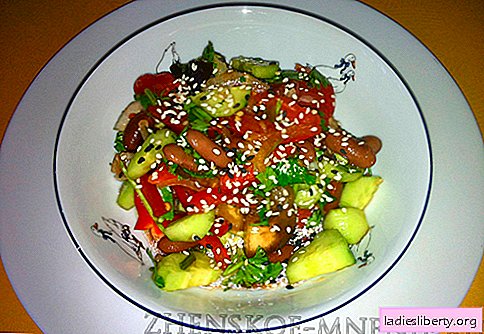
Many people know that sweets and a perfect figure are incompatible. It is enough to limit the consumption of your favorite sweets, cakes or muffins for some time, as a few extra pounds immediately go away. It turns out that the exception to the diet of sweets - this is a kind of keto diet, albeit facilitated.
The basics and principle of the keto diet
To date, the keto diet is one of the most popular because of its high efficiency. During this diet, you can adhere to a certain high-calorie diet, but at the same time maintain muscle mass. Metabolism with this diet improves, and fats are burned. The body begins to work on the basis of burned body fat and due to the energy from the fats entering the food.
The normal functioning of the human body depends on the intake of proteins, fats and carbohydrates. Any of the components is important. Carbohydrates are the main source of energy, they quickly dissolve in the stomach and are absorbed in the body. When there is not enough carbohydrate from the external environment, the body begins to independently produce glucose analogues called ketones. They form at the time of fatty acid oxidation. And the latter, in turn, are taken from subcutaneous fat. The essence of the ketone diet is to reduce the amount of carbohydrates consumed to start the body's processes of burning deposits on its own.
Choosing such a diet for yourself, it will be necessary to monitor the amount of fats and proteins consumed so that the calorie content of low-carb nutrition does not become critical.
White and black lists of products in compliance with the keto diet
With a keto diet, you can make an extensive and even varied diet. The white list of products includes:
1. Meat products. These include poultry, pork and beef. You can even eat chicken skins.
2. Seafood, including shrimp, squid, salmon, herring. You can also eat other fatty fish, but without breading.
3. Eggs that can be eaten in any form.
4. Healthy fats. This means that you can use vegetable or olive oil for cooking. Omega-3 and 6 fats included in the diet will also benefit.
5. Green vegetables and greens, including lettuce, cabbage, asparagus and others.
6. Dairy products: butter, sour cream, fatty cheeses and 40 percent cream.
7. Nuts are no exception to the ketone diet.
8. Berries - they are beneficial to the body, but their number should be moderate.
The list of products can be expanded, but you should choose those in which the ratio of carbohydrates is not more than 6%. The use of ordinary drinking water in large quantities, as well as green tea, will benefit.
Exclude from your diet the following products:
1. Sugar in any of its manifestations.
2. Products with a high starch content are potatoes, bread, pasta, rice.
3. Carbonated drinks, sweet bars, chocolate, ice cream, muffins - all popular similar products are the main enemies of the diet.
4. Margarine - this product, in principle, does not belong to a healthy diet and is not appropriate for any diet.
5. Beer contains many quickly digestible carbohydrates.
6. Fruits that contain a lot of sugar should be excluded. Among such tangerines, grapes, bananas, mangoes.
7. Some vegetables, such as beets or carrots, are also on the forbidden list of products.
The rules of nutrition and making a menu for a keto diet
Food with the right keto diet should have the following ratio: 65% fat, 30% protein, 5% green vegetables and 0% sugar.
Despite the almost twofold percentage excess of the proportion of fats, their weight is almost equal to the weight of proteins. This is the principle of the ketone diet.
Strict compliance with the percentage ratio can not be followed. It may change, but the best option is to increase in the direction of fat. For example, fats can be 75% and protein foods 20%.
Depending on the purpose, you can sit on a ketone diet from 1 week to 2 months. Beginners in this business should begin with 1-2 weeks, the first of which should be distinguished by a high protein content of up to 45%. This is done in order not to expose the body to stress and give it the opportunity to adapt to a new lifestyle. In the second week, protein intake can already be reduced to 30% of the total food intake. Discontinuing the ketone diet should also be gradual. The proportion of carbohydrates should gradually increase to 30 grams per day. Such a diet without painful starvation and portion restrictions shows real results. In a few weeks you can get rid of 10 extra pounds.
Selection of a menu for a diet is the next step after familiarization.
1. Breakfast may include up to 15 g of carbohydrates. You can take them from non-starchy foods, such as cheeses or vegetables. The breakfast option consists of scrambled eggs or omelet from 3-4 eggs, can be with fried tomatoes, protein shake and toast and cheese. Such a breakfast will cost 550-600 Kcal.
2. For lunch, in no case should you choose cereals, sugar, starchy vegetables, milk, yogurt, fruits. Carbohydrates should be limited as much as possible, the permissible value is 15 g. For lunch, meat, salads are ideal, soup with meatballs, but without potatoes or noodles, is ideal. Lunch option: brown rice with chicken breast and cheese. Lunch will take 350-400 Kcal.
3. For dinner, you can choose a combination of meat and green vegetables. Vegetable fats will be beneficial in this meal. They can be taken from nuts or vegetable oils for dressing salad. Dinner example: baked salmon or trout in foil and salad. Calorie intake of about 300.
4. Do not forget about snacks in the form of an afternoon snack or a second dinner. During them, you can’t exceed the carbohydrate rate of 5 g. Types of snacks: boiled eggs, fish, cucumbers, celery, chicken wings, cheese, almonds, cottage cheese.
Such a menu is not the only right one with a ketone diet. But on his example, you can notice the ratio of proteins, carbohydrates and fats. Knowing the list of products, you can make a varied and healthy diet every day.
It is very difficult to get ahead of the calorie content of a dish. To do this, you need to know the caloric content of each ingredient separately and take into account its weight. If everything is in order with mathematics, then there will be no problems. And do not forget that raw foods have a different weight than after cooking.
Three varieties of keto diet
1. Standard - the simplest type of diet. To begin with, you should calculate your daily calorie intake. If a diet is used to burn fat, then 500 kcal should be subtracted from the obtained value, and if to build muscle, then add 500 kcal. From other varieties, nutrition is distinguished by a constant ratio of more proteins and fats and a small amount of carbohydrates. Training is recommended during a moderate-intensity standard keto diet.
2. Targeted - a diet option with the addition of refids. Refids are carbohydrate loads that are used before and after training. They are needed to increase the intensity and productivity of training by providing the body with glucose. The rest of the day should adhere to the established ketosis program. It should be consumed 0.5-1 g of carbohydrates per 1 kg of body weight, and reduce fats in order to maintain the calorie value unchanged. Such fuel will give strength in training.
3. Cyclic - a diet with periodic refids that help replenish muscle depleted glycogen reserves. It is considered the most "advanced option." The duration and time of breaks between refids will directly depend on the intensity of training and goals. You can resort to such a variety of diets no earlier than 2 weeks after the onset of ketosis. In this case, you need to add 5-10 g of carbohydrates per 1 kg of weight, reduce fat, and leave the protein at a high level. Carbohydrate loading lasts from 9 to 36 hours, it is better to start with a minimum mark. Then you can add 2-4 hours to each time and focus on the reaction of your own body.
It’s worth starting with the standard keto diet. You should always pay attention to the behavior of the body, the dynamics of the intensity of training. If the latter is markedly reduced, then other varieties of ketosis should be tried.
Side effects, or what to prepare for when choosing a keto diet
1. The appearance of fatigue. Unaccustomed to a small amount of carbohydrates, the body can at first give out a reaction in the form of fatigue. But further, depending on the individual characteristics of each, fatigue will either pass away or be replaced by a surge of strength and improvement in well-being. Over time, the body gets used to the fact that ketones become a source of energy.
2. Increase in cholesterol. This problem may occur if you eat saturated fats. The consequences of high cholesterol are diseases of the heart and blood vessels. If you follow that exclusively “healthy” fats, for example, from nuts, vegetable oils, and fish, get into the food, then such a side effect will not be threatened.
3. Vitamin deficiency. Refusing carbohydrates can lead to a deficiency of minerals and vitamins in the body. Multivitamins should be taken during the diet.
4. If there is enough fiber in the diet, which is found in green vegetables, as well as in supplements, then there will be no digestive problems.
5. Ketoacidosis or a violation of carbohydrate metabolism is manifested by the smell of acetone from the body, from the mouth, from urine. To get rid of it, you should drink more water. For diabetics, a keto-diet is strictly contraindicated due to the possibility of ketoacidosis.











